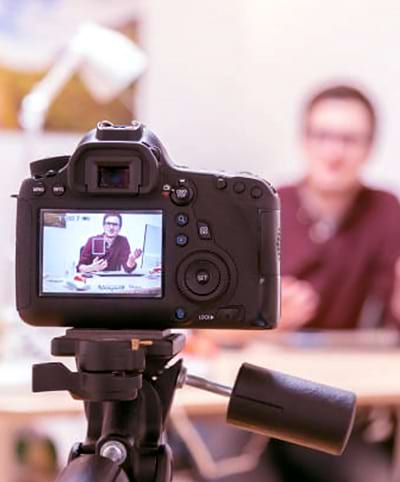11 Pro Tips & Tricks to Click Brilliant Pictures with Your Phone
The smartphone has become like the Swiss army knife of technology. Various useful bits all folded into one clever piece of equipment. The phone, computer, music player, sound recorder, GPS map and so much more can be accomplished through this device that is, on an average, 5-odd inches long.
One of the biggest developments in smartphone tech has to be the camera though. From flat, grainy images to world-class hi-res images and full-HD video, shutterbugs now need to drop big money on pro-level DSLRs. But who needs a fancy camera when you can do it all (most of it) on your camera phone? Any capable smartphone will give you a wide variety of DSLR-level controls such as aperture, shutter speed, ISO and more, so all you really need to explore this exciting art form are a few mobile photography tips and tricks.


Here are some photography tricks that you can use to make your Instagram feed pop, flood your Facebook gallery with ‘likes’ and capture moments in time perfectly, so you can preserve those memories forever.
11 tips for amateurs to click perfect pictures on your smartphone:
1. Understand your camera app
Before you can start clicking great photographs, you need to grasp the capabilities of your smartphone camera. So fiddle around with all the settings and options available, do some research to understand what they mean and how they affect photographs, and then experiment with those settings yourself. Once you have it all figured out, you can actually harness those tools to make your photography stand out.
2. Keep your lens clean
That little lens at the back of your phone tends to get dirty, exposed as it is to the elements all day, every day. So make sure to keep it clean and free of dust, dirt and debris, or all those impurities will translate onto your pictures.
3. Use an advanced camera app
You can download third-party apps that will give you even greater control on your phone’s camera. Greater control means more versatility in pictures and a more accomplished photographer.
4. Avoid flash
While the flash is useful when taking those celebratory pictures at the club, it isn’t great for artistic photography. Because the light source is so centred, it distorts the picture’s balance by creating too many shadows, and that one bright point can reflect horribly on surfaces that have even the slightest bit of shine.
5. Figure out the right distance
One thing that the smartphone still hasn’t caught up with the DSLR on is the zoom lens. The ability to take up-close pictures of objects from really far away is still a challenge for smartphone photographers, and the only workaround currently is to get as physically close or far away from the subject as required to click the picture.

Explore how Seamedu can significantly enhance and elevate your Photography.
Hands-On Training: Practical exercises for real-world Photography.
Industry-Expert Faculty: Learn from seasoned professionals.
Networking Opportunities: Connect with industry professionals for career-enhancing possibilities.
 +91 020 46607500
+91 020 46607500
6. Take your time
No matter how fleeting the opportunity to click a great shot, you should try to take at least a second to think of what you want your picture to look like before you start clicking. You get a preview of the frame on your phone, see if you like how it looks, adjust angles, settings and approaches, and only then click the picture.
7. Stage your frame
Photography isn’t just the act of clicking, but the work that goes in before it as well. So if you are clicking a portrait, make sure your subject is dressed up and has make up on, if you are clicking an object, make sure it is clean (unless its unclean nature is the point of the picture) and also make sure you position your subject for optimal background, and lighting.
8. One subject, many frames
Smartphones have massive memory space so don’t hesitate to click the same object from different angles, in different orientations and from various heights, too. You might not notice it straight away, but the results from some of these different angles might just surprise you.
Unlock Your Child's Potential in Photography.
Is your child ready to embark on a journey in Photography? Complete the form below to help them take their first step towards their passion.
Fill Out the Form9. Rule of thirds
One of the most basic rules of composition, the Rule of Thirds states that the primary subject of the photograph should never be more than one-third of the distanceaway from the edge of the frame. Cameras come with a grid to help you employ this rule, so use it.
10. Editing and filters
Enhancing the pictures you click is great, but don’t do it to the point where it looks alien and garish. The best edits are those which are invisible to layman, so make sure you picture looks its best, but still looks natural.
11. Tell a story
Your photograph should evoke an emotion, or a response from its viewers. Compose your frame and pick subjects in a way that will convey a message, the impact of this will be more powerful than just random clicks.
With these tips for taking photos on your phone, you are now ready to go out there to capture space and time, and present it as unique works of art. And if you really want to make a living out of it, well, read on…
How to become a professional photographer
All kinds of photographers are gaining greater prominence today, and this is the perfect time to enter the photography industry. But how do you go about it? With Seamedu School of Pro-Expressionism’s photography courses, you have multiple options to make it big in this arena.
Our courses are designed and conducted by industry experts who have been around for a substantial amount of time and are now passing on their pearls of wisdom to the students.
Here is a brief summary of the topics covered as part of our degree course in photography:
- Fundamentals of photography
- Artificial and natural lights
- Studio lighting and photography
- Quality and quantity of light
- Study of color and texture
- Principles of design and composition
- Fashion, people and portrait photography
- Photojournalism
- Wedding / event photography
- Landscape, wildlife and travel photography
- Sports, industrial, interior and architecture photography
- Table top, food and product photography
- Conceptual fashion photography
- Advance skin retouching for fashion/ conceptual fashion photography
- Developing concepts / ideas for product photography & their uses
- Advance retouching for different types of products & food photography
- Making and 100% examination of portfolio
All that you need to enroll in our courses is a 10+2 from any stream and your own DSLR and basic lenses. A fledgling career in the exciting world of photography awaits you. Enquire now for more details and our team will get in touch with you!
Until then, click away with your smartphone!


CATEGORIES
Are you aspiring to become a proficient Photography professional?
Look no further; we are committed to nurturing the potential of young minds. Are you ready to enhance your skills?


